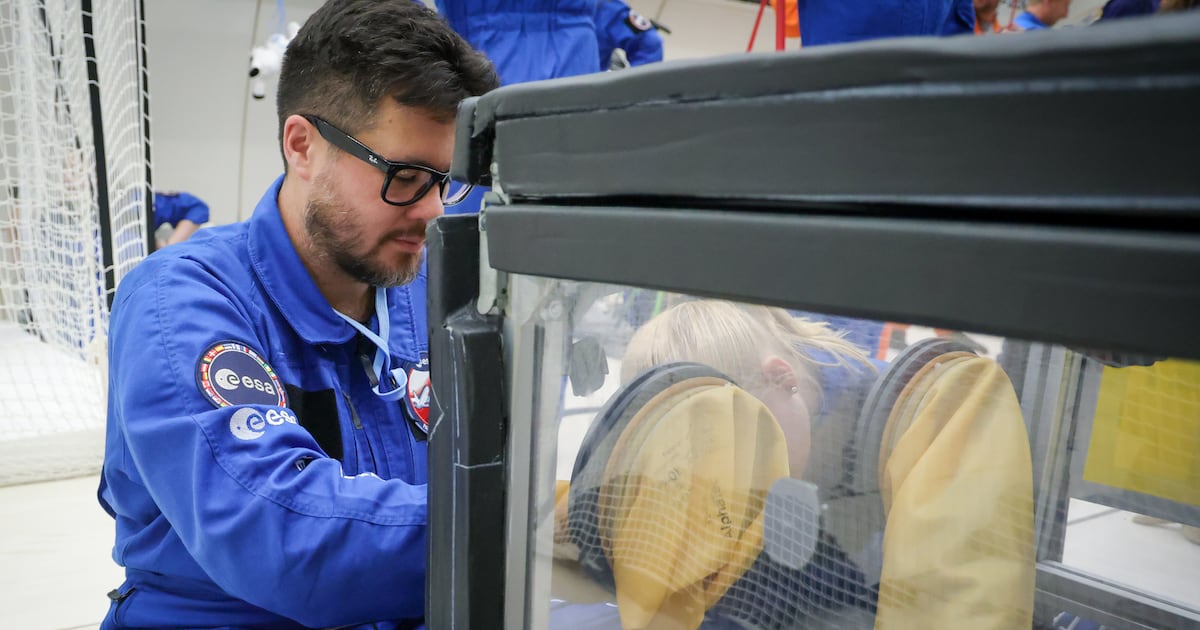Science
Canadian Anesthesiologist Explores Drug Behavior in Microgravity

Anesthesiologist Dr. Matthew Turnock has embarked on a groundbreaking research project to investigate how anesthetic drugs behave in microgravity. His team conducted experiments in an Airbus A310, simulating the conditions of space to understand the implications for future medical procedures aboard spacecraft.
The research aimed to address the challenges of administering anesthetics in a weightless environment. According to Turnock, “In space, giving an anesthetic is challenging because of the space and volume requirements.” He highlighted the risks associated with inhaled anesthetics, where an accidental circuit disconnection could lead to unintended anesthetization of the entire crew.
To conduct the research, Turnock and his colleagues developed a model of a spinal canal using CT images of a real person, filling it with simulated spinal fluid. “There’s a chance the medication could float up to the brain,” he explained. This phenomenon is known as a high spinal, which they also observe on Earth.
Experiencing Zero Gravity
The team traveled to France, where they utilized the Airbus A310 as their temporary laboratory. The aircraft ascended and then descended to create brief periods of weightlessness. “Every time the aircraft crests that peak you get about 25 seconds of zero gravity,” Turnock noted. “And it’s not simulated, it’s real zero gravity, exactly how an astronaut would feel in space.”
During these moments of weightlessness, the researchers completed their experiments, hypothesizing that without gravity, the medication would not spread as it does on Earth. Their findings confirmed this theory, revealing that the risk of the anesthetic floating to the brain is likely overstated.
“The medication doesn’t spread enough for it to work,” Turnock stated, adding that the team is now investigating ways to promote better medication distribution in microgravity.
Future Research and Team Collaboration
The research project has sparked numerous questions, leading to a quest for further exploration in space medicine. Turnock’s team included fellow anesthesiologist Dr. Alex Suen, anesthesiologist resident Dr. Siobhan Wagner, and UBC medical student Adrian Tabari. The project received funding from the Canadian Space Agency, highlighting the collaboration between medical professionals and space exploration authorities.
This research not only contributes to the understanding of anesthetic administration in space but also sets the stage for future studies that could enhance medical safety during long-duration space missions. As Turnock and his team continue their investigation, the implications of their findings could have a lasting impact on how medicine is practiced in environments far beyond Earth.
-

 Politics2 weeks ago
Politics2 weeks agoSecwepemc First Nation Seeks Aboriginal Title Over Kamloops Area
-

 World4 months ago
World4 months agoScientists Unearth Ancient Antarctic Ice to Unlock Climate Secrets
-

 Entertainment4 months ago
Entertainment4 months agoTrump and McCormick to Announce $70 Billion Energy Investments
-

 Lifestyle4 months ago
Lifestyle4 months agoTransLink Launches Food Truck Program to Boost Revenue in Vancouver
-

 Science4 months ago
Science4 months agoFour Astronauts Return to Earth After International Space Station Mission
-

 Technology3 months ago
Technology3 months agoApple Notes Enhances Functionality with Markdown Support in macOS 26
-

 Top Stories1 month ago
Top Stories1 month agoUrgent Update: Fatal Crash on Highway 99 Claims Life of Pitt Meadows Man
-

 Sports4 months ago
Sports4 months agoSearch Underway for Missing Hunter Amid Hokkaido Bear Emergency
-

 Politics4 months ago
Politics4 months agoUkrainian Tennis Star Elina Svitolina Faces Death Threats Online
-

 Politics4 months ago
Politics4 months agoCarney Engages First Nations Leaders at Development Law Summit
-

 Lifestyle2 months ago
Lifestyle2 months agoManitoba’s Burger Champion Shines Again Amid Dining Innovations
-

 Technology4 months ago
Technology4 months agoFrosthaven Launches Early Access on July 31, 2025





















